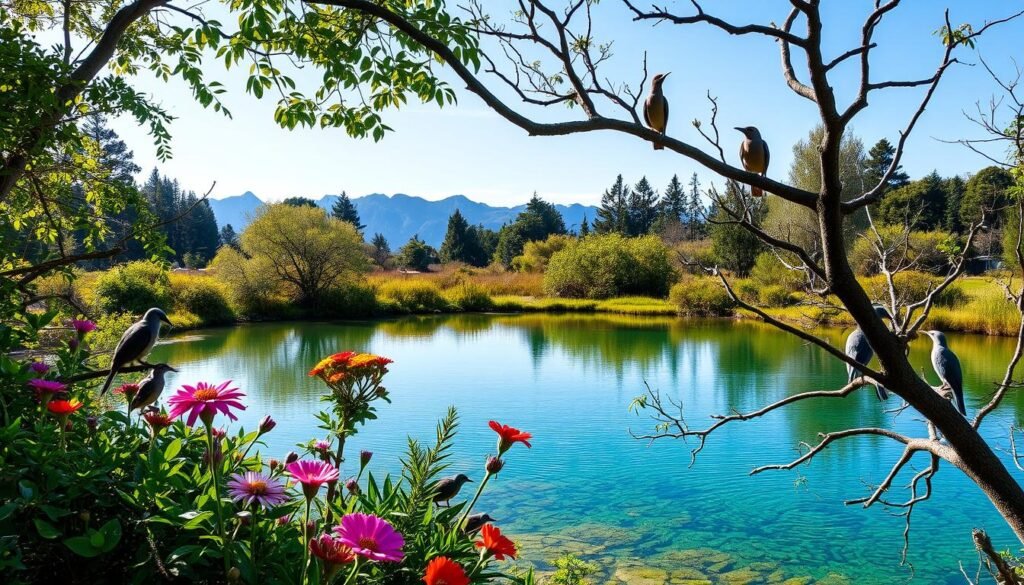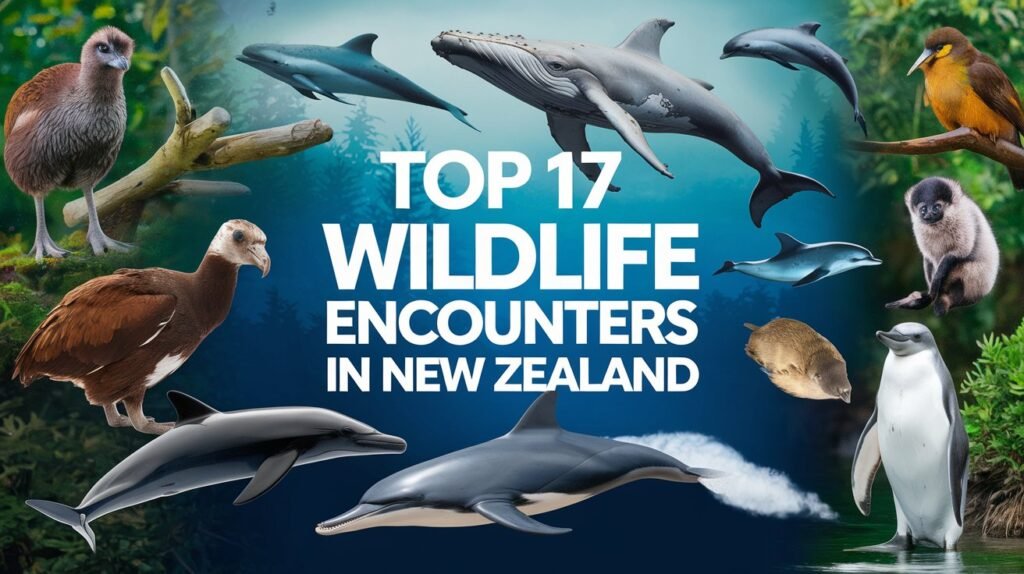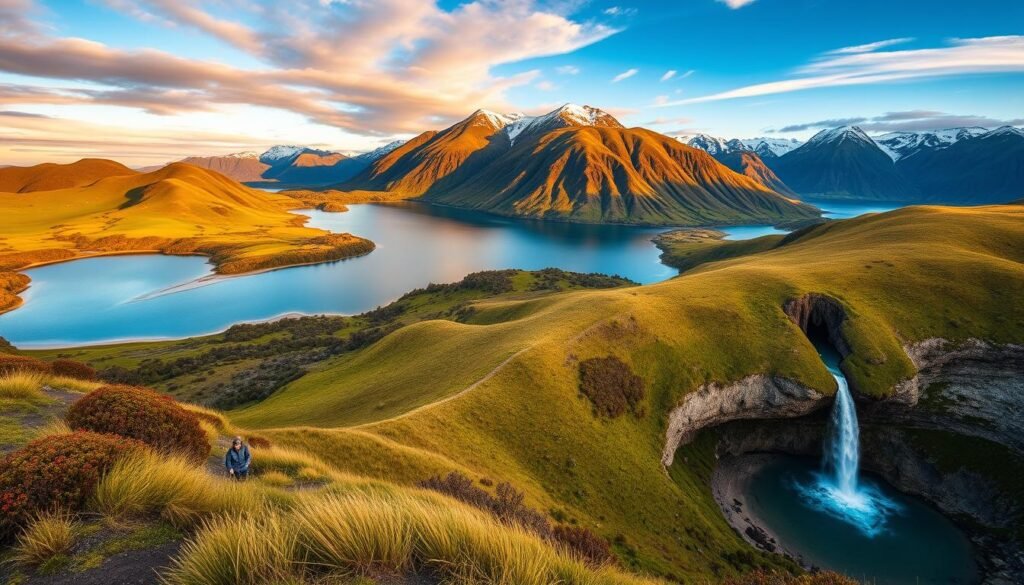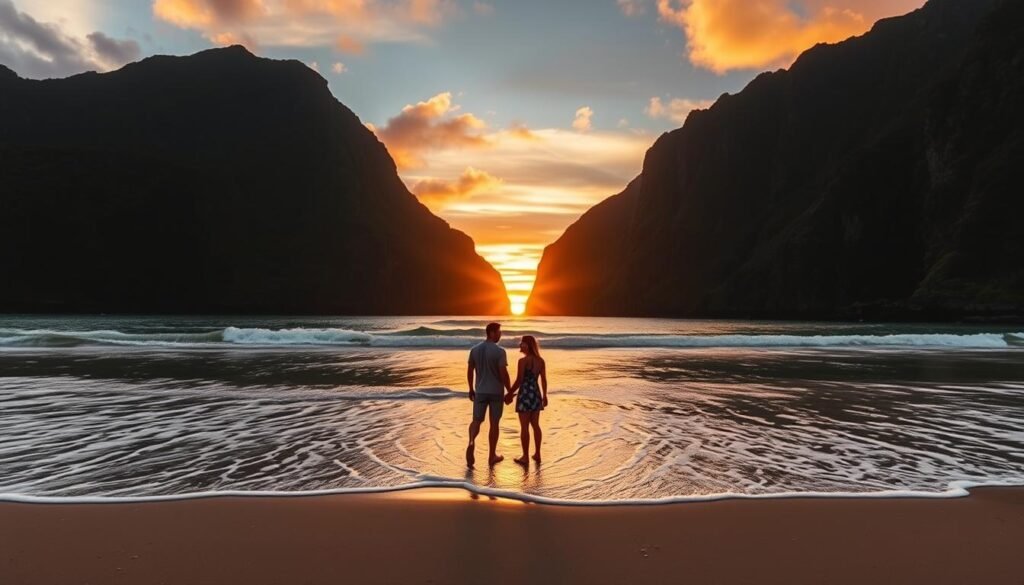New Zealand is a paradise for wildlife lovers. From rare birds to incredible marine life, this beautiful country offers an array of unique wildlife experiences. Here are the top 17 wildlife encounters you should not miss when visiting New Zealand:
This post may contain affiliate links. If you make a purchase or booking through one of our links, we may earn a small commission. As an Amazon Associate, I earn from qualifying purchases. The content on this website was created with the help of AI.
1. Whale Watching in Kaikoura
Kaikoura is one of the top whale watching destinations in the world. You can spot sperm whales year-round, and during migration season, you might also see humpback whales, orcas, and blue whales. If you’re lucky, you might even catch a glimpse of the world’s largest marine mammal, the blue whale. Make sure to go on a guided tour for the best chance of sightings!
2. Kayaking with Seals in Wellington
The waters around Wellington’s coastline are teeming with life, including playful New Zealand fur seals. On a kayaking adventure, you’ll get a chance to paddle alongside them as they swim through the kelp forests. Some tour operators even offer the opportunity to get close to the seals on remote beaches—perfect for nature enthusiasts looking for a more intimate encounter.
3. Penguin Viewing in Dunedin
Dunedin is known for its incredible wildlife, including the endangered yellow-eyed penguin. The Otago Peninsula is home to several protected colonies, where you can see these rare penguins waddling to shore. While the penguins are most active during dawn and dusk, some guided tours offer evening viewing for those keen on spotting them returning to their nests.
4. Glow Worm Caving in Waitomo
The glow worms of Waitomo are a unique phenomenon found in several caves throughout the region. When you enter these glowing caves, it feels like you’re walking through a magical, natural light show. Don’t miss the chance to take a boat tour, where you’ll drift silently through the caves while thousands of glow worms illuminate the water around you. It’s a surreal and unforgettable experience.
5. Kiwi Spotting in Zealandia
Zealandia is a sanctuary located in the heart of Wellington, dedicated to preserving New Zealand’s rarest species. It’s one of the best places to see the elusive kiwi bird in the wild, especially in the late evening when they come out to forage. Zealandia also features other endangered species like the takahe and the saddleback, making it an ideal destination for birdwatching.
6. Swimming with Dolphins in Akaroa
Akaroa, located on the South Island, is famous for its Hector’s dolphins, the world’s smallest and rarest species. Swimming with these friendly dolphins in their natural habitat is an experience like no other. Guided tours give you a chance to learn about the dolphins’ behavior, conservation efforts, and enjoy the thrill of being in the water with them.
7. Watching Sperm Whales in Kaikoura
Kaikoura’s deep underwater canyons provide the perfect habitat for sperm whales. These majestic creatures are known for their dramatic tail flukes when diving deep into the ocean. On a boat tour, you’ll have the chance to see these massive whales up close, and often they’ll come to the surface to breathe, giving you a rare chance to capture photos of them in action.
8. Seeing Humpback Whales in Kaikoura
In addition to sperm whales, Kaikoura is a hotspot for humpback whale sightings. These majestic creatures can often be seen migrating along the coast, particularly from June to September. A boat tour will take you close enough to see their impressive size, and sometimes even witness their breathtaking tail-slapping behavior!
9. Orca Watching in Kaikoura
Kaikoura offers a one-of-a-kind opportunity to spot orcas, particularly from November to February. The orcas here are known to hunt for stingrays in the shallow waters, which is a fascinating spectacle to witness. Keep your camera ready for shots of these apex predators as they glide through the water with power and grace.
10. Viewing the New Zealand Fur Seals in Cape Palliser
Cape Palliser is home to a large and active colony of New Zealand fur seals. Visitors can easily access the colony via a short walk along the rugged coastline. The seals are often seen lounging on the rocks or swimming in the ocean, and they’re quite accustomed to human visitors, so you may get a chance to observe them up close.
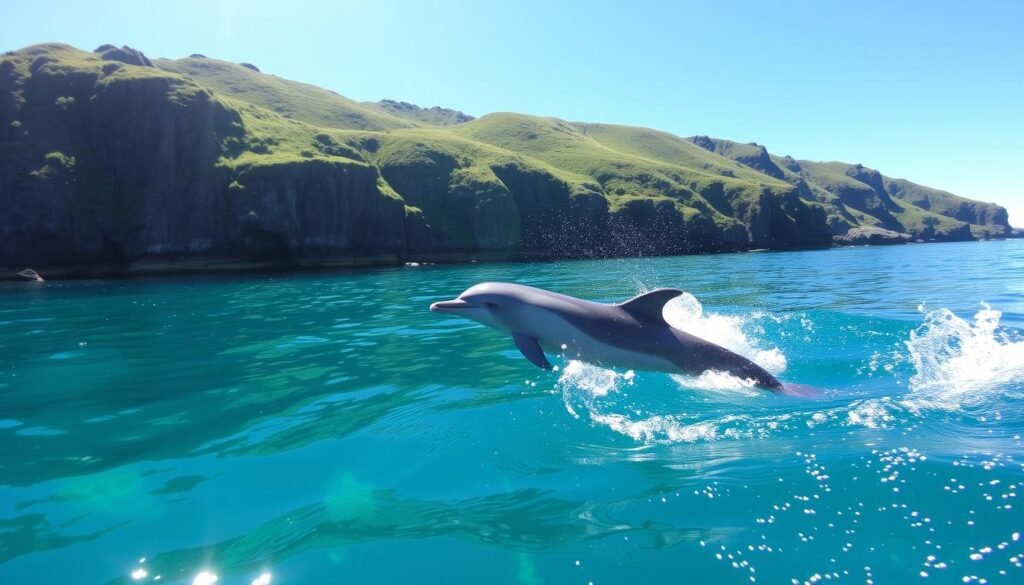
11. Seal Watching at Otago Peninsula
Otago Peninsula offers some of the best seal-watching in New Zealand. The colony of fur seals here is one of the largest in the country, and the rocky shores provide the perfect environment for the seals to sunbathe and play in the surf. Some tour operators offer guided seal-watching tours, where you can get the inside scoop on seal behavior and the region’s conservation efforts.
12. Visiting the Seal Colony at Kaikoura
The seal colony in Kaikoura is located just a short distance from the town center, making it easily accessible for visitors. The colony is home to both male and female fur seals, and you’ll often see them playing in the surf or resting on the rocky outcrops. It’s a perfect spot for photographers looking to capture the playful antics of these charismatic creatures.
13. Watching Penguins on the Otago Peninsula
The Otago Peninsula is also home to the world’s smallest penguin, the little blue penguin. These adorable birds can be seen returning to their nests at dusk after a long day of fishing. Some tour operators offer evening tours, giving visitors the opportunity to watch the penguins as they waddle up the beach to their burrows.
14. Glow Worms in Waitomo Caves
Aside from the famous Waitomo Caves, other areas in the region also feature glow worms, including the Ruakuri Cave and Aranui Cave. These lesser-known spots offer a quieter, more intimate experience where you can enjoy the glow worm light show away from the crowds.
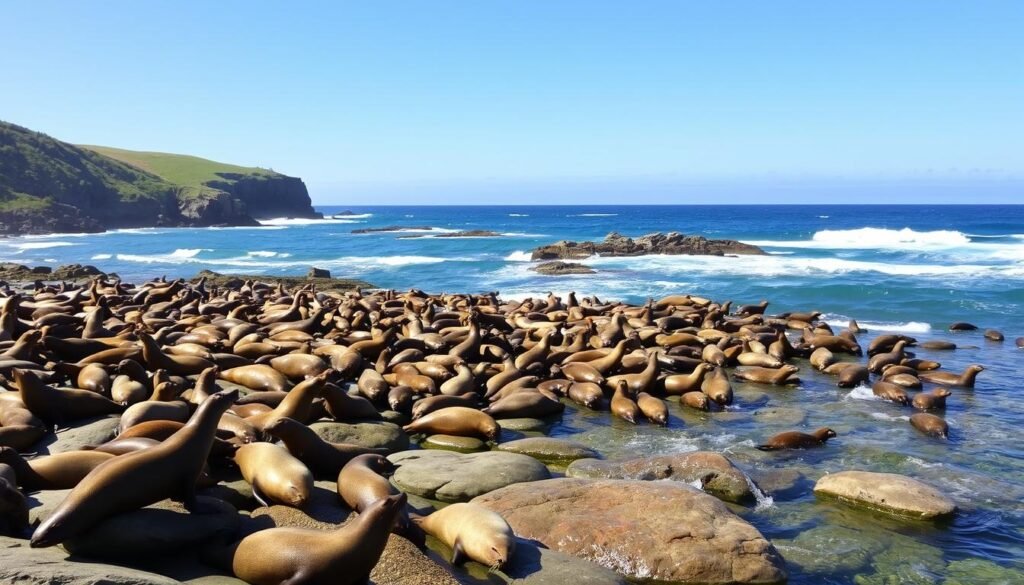
15. Observing Tuatara Lizards
The tuatara is a rare and ancient reptile that is often considered a living fossil. It’s found in only a few places in New Zealand, including predator-free islands and sanctuaries like the Karori Wildlife Sanctuary. While they may look like lizards, tuataras belong to their own unique order, and visiting one of these sanctuaries offers a rare chance to observe them up close.
16. Encountering Native Birds at Bird Sanctuaries
New Zealand is famous for its birdlife, and visiting a bird sanctuary like Tiritiri Matangi Island or the Otago Peninsula is one of the best ways to encounter some of the country’s most rare and endangered species. The islands are home to native birds such as the kaka, the tui, and the North Island kokako. These sanctuaries are often predator-free, allowing birds to thrive in their natural habitat.
17. Spotting Rare Endemic Birds like the Kākāpō
The kākāpō is one of the rarest birds in the world and can only be found on a few small islands in New Zealand. The bird has a nocturnal lifestyle and is flightless, making it highly vulnerable to predators. However, thanks to ongoing conservation efforts, you can visit specific sanctuaries like the Kākāpō Recovery Program on Whenua Hou (Codfish Island) to see these unique creatures in person.
Best Seasons for Wildlife Viewing
New Zealand’s native birds, like the kiwi, takahē, and kōkako, live in lush forests. The moa, which couldn’t fly, used to roam the open grasslands. Seabirds, such as albatross and penguins, find a home on the rugged coastlines. The clear lakes and rivers are home to rainbow and brown trout.
The best time to see New Zealand’s wildlife depends on the species and their habits. Spring and early summer are great for seeing newborn kiwi chicks and watching native birds breed. Autumn is good for spotting migratory birds like the bar-tailed godwit. Winter is the best time for whale watching and visiting seal colonies.
Conservation Efforts and Sustainable Tourism
New Zealand is dedicated to protecting its environment. There are many bird sanctuaries and kiwi spotting places across the country. Responsible tourism helps keep these ecosystems safe. It lets visitors enjoy the beauty of New Zealand without harming it.
Learning about New Zealand’s wildlife and conservation helps travelers have amazing experiences. It deepens their appreciation for the country’s natural beauty.
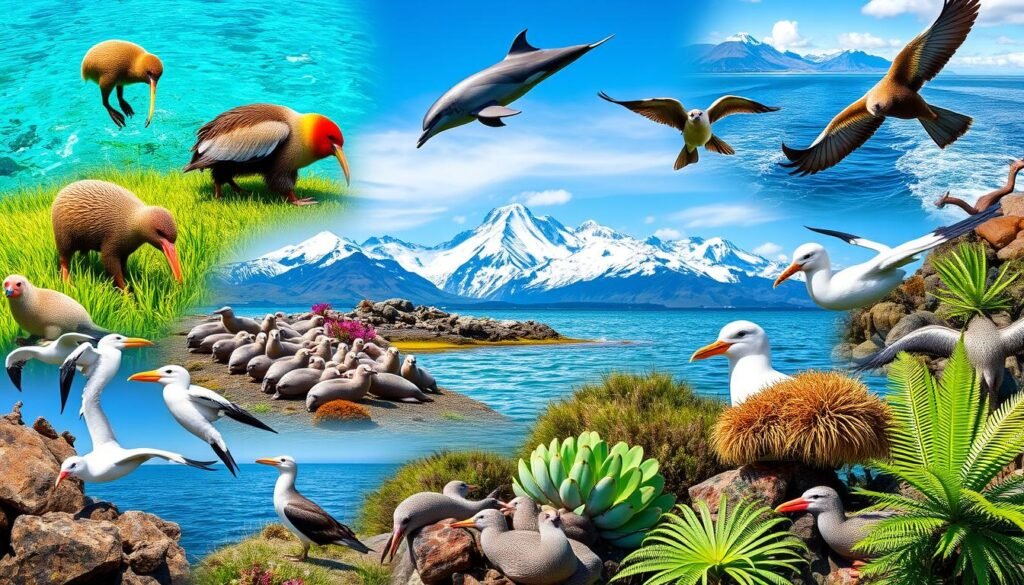
Discovering Native Bird Sanctuaries
New Zealand is home to many unique native bird species. These birds can be found nowhere else on Earth. The country has set up native bird sanctuaries to protect and show off these birds. These places let visitors see these birds in their natural homes.
Tiritiri Matangi Island is a special place for bird lovers. It’s a safe area for birds, located near Auckland. Here, you can see rare birds like the Takahē, Kōkako, and the famous Kiwi bird.
Kapiti Island is another famous sanctuary. It’s a nature reserve with over 1,000 Kōkako birds. You can go on guided tours to see these birds up close in the forest.
- Tiritiri Matangi Island: Showcases rare bird species like Takahē, Kōkako, and Kiwi
- Kapiti Island: Offers the largest known population of the endangered Kōkako bird
- Zealandia Eco-Sanctuary: Protects over 40 species of native birds, including the Tūī and Kākā
- Orokonui Ecosanctuary: Provides a safe haven for the endangered Hoiho (Yellow-eyed Penguin)
These sanctuaries are key in saving New Zealand’s bird species. They help by supporting tourism and education. For those who love birds and nature, visiting these places is a chance to see New Zealand’s amazing native bird variety.
